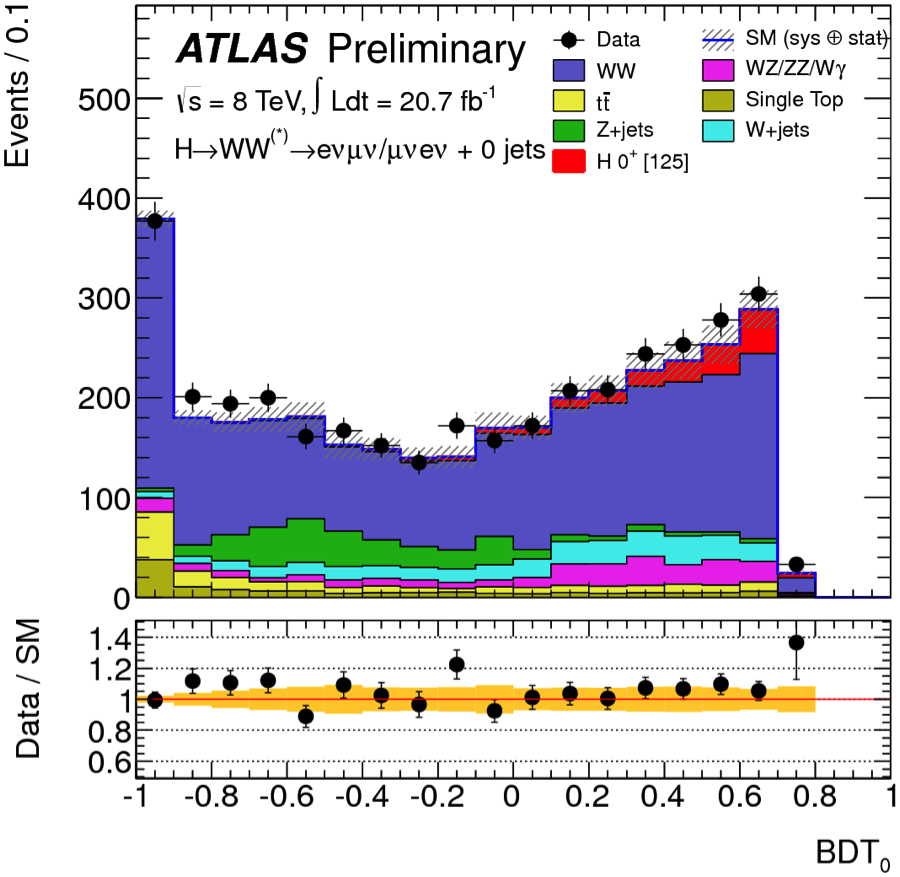Excitement was felt around the world when on July 4, 2012 the two international collaborations ATLAS and CMS working at the Large Hadron Collider (LHC) near Geneva, Switzerland announced the discovery of a new particle in the search for the Higgs boson.
Ever since the discovery announcement last year, the question on everyone’s mind: Is this the Higgs boson predicted in the Standard Model or could it be something different? Perhaps something that could indicate new physics beyond the Standard Model?
The past several months of research have not extinguished our enthusiasm. ATLAS has recorded 5 times more data since the discovery and obtaining detailed measurements of this new particle’s properties has been one of the highest priorities. Since the Higgs boson decays in many different ways, one important test is to measure these branching ratios into other particles more precisely.
One of the key properties that will determine if this is indeed the Higgs boson is called the spin. When the Higgs decays into lighter particles, the spin affects the angles at which the lighter particles escape. If the particle has spin zero it is a Higgs boson, spin one has already been excluded from the observed decay into two photons, but it could be spin two.
ATLAS has just released a new analysis, testing the spin hypothesis when the Higgs bosons decay into two W bosons. Doug Schouten, a postdoctoral researcher with the TRIUMF ATLAS group, is one of the coordinators and a driving force in the ATLAS team that produced this new result. This new analysis is the most sensitive spin analysis to date. The result disfavors the spin two hypothesis in favour of the spin zero hypothesis at the 95-99% level (depending on the production details).
The new spin results from ATLAS and CMS, together with the large number of detailed branching ratio and resulting Higgs coupling measurements, present a picture that the newly discovered particle is behaving the way the Standard Model Higgs boson is expected to behave. Researches at TRIUMF, as well as collaborators from universities across Canada, are looking forward to continue analyzing the 2012 dataset and the much larger datasets expected at the higher energy collisions starting in 2015. Further analysis with higher precision will show if there are any deviations from predictions of the Standard Model.
The TRIUMF Tier-1 computing resources were essential in this analysis.
-by Oliver Stelzer-Chilton and Bernd Stelzer (SFU), edited by Melissa Baluk
|
|
| |||||
| Figure 1. Distribution of the multivariate observable for 8 TeV data in the decay channel where the Higgs decays to two W bosons. The Higgs boson signal (red) is stacked at the top of the background. | Figure 2. The median test statistic for spin zero (blue dashed line) and spin two (red dashed line) as well as the observed value (solid black line), for various assumptions of the production (fraction of qqbar ,fqqbar) of the particle under the spin two hypothesis. The one- and two-sigma uncertainty bands for spin zero are also shown by the green and yellow regions, respectively. |
| |||||
|
| ||||||


